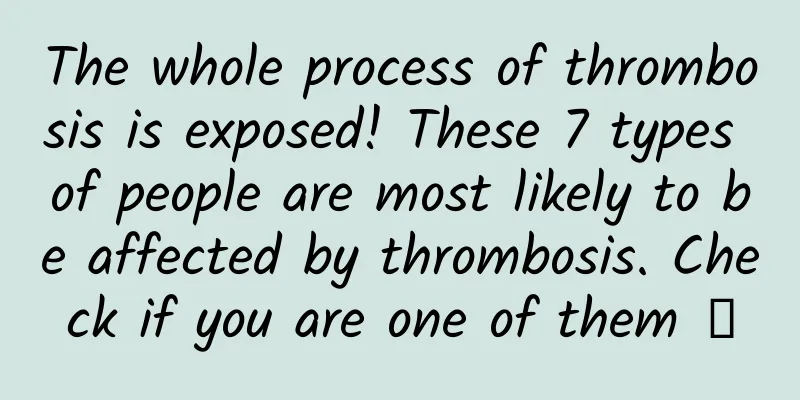How many days does it take for a female test tube transplant to implant?

|
In vitro fertilization is currently a very mature technology. It mainly combines sperm and eggs under artificial action and then sends them into the female's uterus. In vitro fertilization is currently a relatively mature technology. So how many days will it take for implantation after test tube transplantation? What issues should we women pay attention to after test tube transplantation? Let's analyze it in detail now. First, the first step is to retrieve the egg Under the guidance of B-ultrasound, the doctor uses a special egg retrieval needle to puncture the mature follicles through the vagina and suck out the eggs. Egg retrieval is usually performed under intravenous anesthesia, so the woman does not feel any pain from the puncture. In vitro fertilization Sperm retrieval: While the female retrieves the eggs, the male retrieves the sperm. After the semen has gone through a special washing process, the sperm and egg are placed in a special culture medium in the hope of natural combination. This is called conventional fertilization. Embryo transfer A few days after fertilization, a very thin embryo transfer tube is used to transfer the best embryo into the mother's uterus through the cervix. The number of embryos to be transferred is determined based on age, embryo quality and previous IVF outcomes. Usually 2-3 embryos are transferred. In recent years, in order to reduce the multiple pregnancy rate, some centers have chosen to transfer a single embryo, or a maximum of 2 embryos. Because the embryo transfer tube is very thin and the doctor's movements are gentle, the patient usually does not feel any pain. Corpus Luteum Support Folding Due to the use of GnRH agonists/antagonists and ovulation-inducing drugs, as well as the loss of granulosa cells caused by oocyte retrieval, women usually have luteal insufficiency during the oocyte retrieval cycle and need to use progesterone and/or chorionic gonadotropin for luteal supplementation/support. If pregnancy is not present, stop taking progesterone and wait for menstruation to occur. If pregnancy occurs, progesterone should be continued, usually until 3 weeks after the fetal heartbeat is seen on ultrasound. Confirmation of pregnancy Serum HCG is measured 14 days after embryo transfer to determine whether pregnancy is present. Serum HCG is measured again 21 days after embryo transfer to understand the development of the embryo. A transvaginal ultrasound examination is performed 30 days after embryo transfer to confirm whether there is intrauterine pregnancy and the presence of fetal heartbeat. The above is the process of our test tube transplantation. Generally, the embryo will be officially implanted 3-4 days after the transplant. During this time, it is recommended that women stay in bed and rest as little as possible to avoid causing the embryo to slip. In this way, the test tube transplant failed. At the same time, pay attention to increasing nutritional intake. When necessary, do it under the guidance of a doctor. |
<<: What are the causes of small bumps in women's vagina?
>>: What to do if your period is delayed for 10 days
Recommend
How long can I have sex after taking the suppository?
People cannot have sex after using the suppositor...
Attention, Japanese encephalitis has entered its epidemic season! Doing these two things well is crucial
Summer and autumn seasons The silent mosquito arm...
How to increase breast milk after delivery during pregnancy
Breastfeeding is very important for the baby'...
What supplements are good to take during menstruation
There are many foods that you cannot eat during m...
Effects of growth hormone on ovarian follicles
Many newly married couples have a special passion...
How to regulate female neuroendocrine disorders?
If the human body has neuroendocrine disorders, t...
Falls - the number one killer of the elderly
This is the 5038th article of Da Yi Xiao Hu Grand...
Will your eyes go blind if you play with your phone for a long time?
One minute with the doctor, the postures keep cha...
How to regulate Yin-Cold Constitution? Recommended by an old Chinese doctor
Many people believe that everyone's physical ...
Does Toxoplasma gondii have any effect on late pregnancy?
Infection with Toxoplasma gondii in late pregnanc...
[Health Lecture] Understanding shingles can help you stay away from pain!
In order to ensure the popularization effect of l...
How many days of pregnancy will breast pain
The breast health of pregnant women is of great s...
How to treat the symptoms of insufficient qi and blood in women
For women, once the phenomenon of insufficient qi...
If pregnant women experience these conditions, they must pay attention to them as soon as possible!
Pregnancy is a great project in the course of hum...
Can I eat kohlrabi during my period?
Kohlrabi is also called mustard greens. In fact, ...









